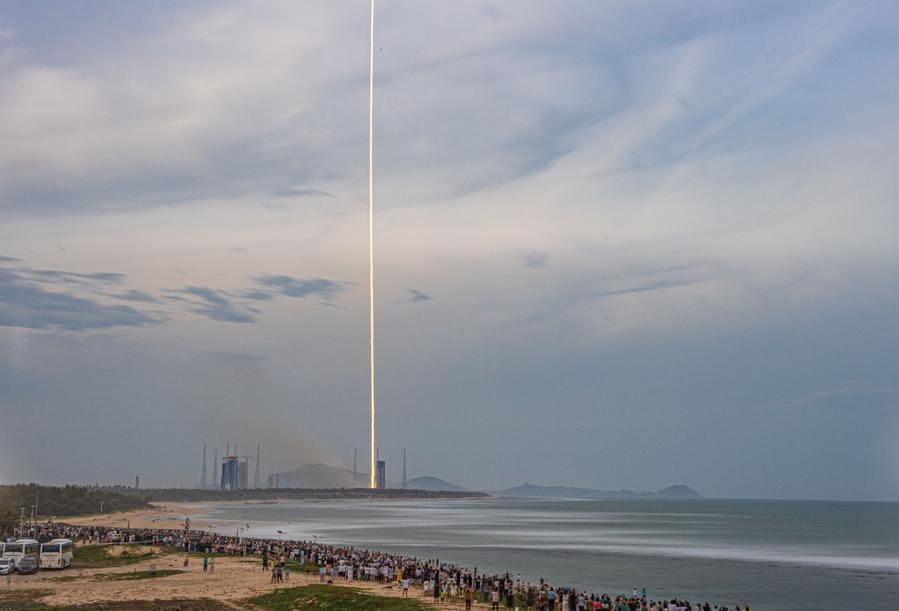New satellites strengthen space network
Mission marks first time private firm's orbiters deployed for national project


China launched a group of internet satellites into orbit on Monday evening, marking the third in-orbit deployment of such spacecraft in eight days.
The satellites are the seventh group of low-orbit hardware in China's State-owned internet network. They were lifted by a Long March 12 carrier rocket at 6:21 pm on Monday from the Hainan International Commercial Aerospace Launch Center — a coastal spaceport in Wenchang, Hainan province — and soon arrived in their orbital positions, according to China Aerospace Science and Technology Corp, maker of the Long March 12 rocket.
The fifth group was launched on July 27 and the sixth on July 30.
The satellites were manufactured by GalaxySpace, a Beijing-based private satellite company, at its "smart factory" in Nantong, Jiangsu province, that features highly intelligent assembly robots and automatic quality testing systems.
Monday's launch was the first time that satellites designed and built by a private company were deployed as part of the national mega-constellation project.
The first six groups of space-based assets in this network were made by State-owned entities such as the Innovation Academy for Microsatellites of the Chinese Academy of Sciences and the China Academy of Space Technology, a subsidiary of China Aerospace Science and Technology Corp.
Previously, several GalaxySpace satellites were launched to take part in a technology demonstration for the State-owned internet network, but they are of an experimental nature and are not formal members in the network.
Now, the private enterprise has become a leader in the domestic commercial satellite market, with 34 satellites that have been launched, ranging from China's first plate-shaped satellites equipped with foldable solar arrays to the nation's first communications satellite with a transmission capacity of 10 gigabits per second.
"Next, GalaxySpace will make all-out efforts to develop core technologies that meet major needs of our nation's space industry, including cutting-edge phased array antennas, mega-constellation networking solutions, on-board large-scale energy systems and digital processing payloads," Hu Zhao, a senior satellite designer at Galaxy-Space, said on Tuesday.
He said the company will also speed up the low-cost mass production of satellites and various key equipment, and continuously push the boundaries of technological capabilities, so as to contribute to forming China's independent and reliable space infrastructure.
Monday's mission marked China's 43rd space launch this year and also the second flight of the Long March 12 rocket model.
Designed by the Shanghai Academy of Spaceflight Technology, the Long March 12 is the 22nd member of the Long March family, the backbone of China's space sector, and the 17th in the operating fleet.
It is the first Chinese rocket to have a diameter of 3.8 meters — most Chinese rockets have a diameter of 3.35 meters, a standard width set in the 1960s considering constraining factors in rail transport.
Standing 62.6 meters tall, equivalent to the height of 22 stories of a standard residential building, the two-stage model is the second highest in all Chinese rockets, only exceeded by the 62.8-meter Long March 5.





































